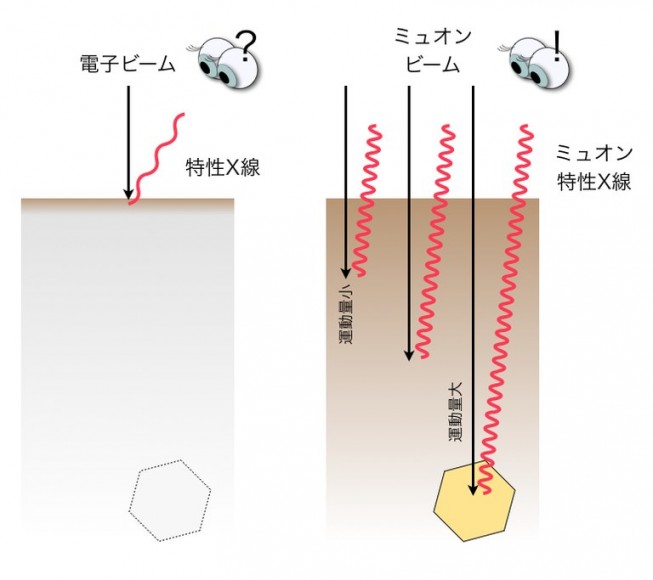The difference between muon beam analysis and electron beam analysis
Successful non-destructive elementary analysis using a muon beam
A group of researchers of the research institutes and universities noted below, using the most intense pulsed muon beam in the world, MUon Science Establishment (MUSE) at the Japan Proton Accelerator Research Complex (J-PARC), succeeded in new non-destructive elementary analysis. Specifically, this group succeeded in non-destructive depth analysis of a variety of materials from meteorite simulant matter of a few millimeters in thickness to light elements such as C, B, N, O and non-destructive elementary analysis of carbonaceous chondrite meteorite including organic substances at the depths of 70μm and 1mm.
Osaka University — TERADA Kentarou, NINOMIYA Kazuhiko
Japan Atomic Energy Agency — OSAWA Takahito, HIGEMOTO Wataru
Hokkaido University — TACHIBANA Shogo
High Energy Accelerator Research Organization — MIYAKE Yasuhiro, KAWAMURA Naritoshi
International Christian University — KUBO Kenya
Kyoto University — TSUCHIYAMA Akira
Tokyo Metropolitan University — EBIHARA Mitsuru
Japan Aerospace Exploration Agency — UESUGI Masayuki

(Link) http://resou.osaka-u.ac.jp/en/research/2014/20140527_1











